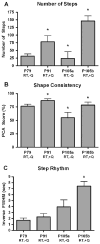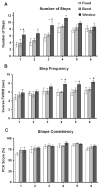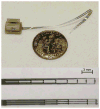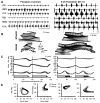Recovery of control of posture and locomotion after a spinal cord injury: solutions staring us in the face
- PMID: 19660669
- PMCID: PMC2904312
- DOI: 10.1016/S0079-6123(09)17526-X
Recovery of control of posture and locomotion after a spinal cord injury: solutions staring us in the face
Abstract
Over the past 20 years, tremendous advances have been made in the field of spinal cord injury research. Yet, consumed with individual pieces of the puzzle, we have failed as a community to grasp the magnitude of the sum of our findings. Our current knowledge should allow us to improve the lives of patients suffering from spinal cord injury. Advances in multiple areas have provided tools for pursuing effective combination of strategies for recovering stepping and standing after a severe spinal cord injury. Muscle physiology research has provided insight into how to maintain functional muscle properties after a spinal cord injury. Understanding the role of the spinal networks in processing sensory information that is important for the generation of motor functions has focused research on developing treatments that sharpen the sensitivity of the locomotor circuitry and that carefully manage the presentation of proprioceptive and cutaneous stimuli to favor recovery. Pharmacological facilitation or inhibition of neurotransmitter systems, spinal cord stimulation, and rehabilitative motor training, which all function by modulating the physiological state of the spinal circuitry, have emerged as promising approaches. Early technological developments, such as robotic training systems and high-density electrode arrays for stimulating the spinal cord, can significantly enhance the precision and minimize the invasiveness of treatment after an injury. Strategies that seek out the complementary effects of combination treatments and that efficiently integrate relevant technical advances in bioengineering represent an untapped potential and are likely to have an immediate impact. Herein, we review key findings in each of these areas of research and present a unified vision for moving forward. Much work remains, but we already have the capability, and more importantly, the responsibility, to help spinal cord injury patients now.
Figures








Similar articles
-
The recovery of standing and locomotion after spinal cord injury does not require task-specific training.Elife. 2019 Dec 11;8:e50134. doi: 10.7554/eLife.50134. Elife. 2019. PMID: 31825306 Free PMC article.
-
Neural plasticity after human spinal cord injury: application of locomotor training to the rehabilitation of walking.Neuroscientist. 2001 Oct;7(5):455-68. doi: 10.1177/107385840100700514. Neuroscientist. 2001. PMID: 11597104 Review.
-
Plasticity of the spinal neural circuitry after injury.Annu Rev Neurosci. 2004;27:145-67. doi: 10.1146/annurev.neuro.27.070203.144308. Annu Rev Neurosci. 2004. PMID: 15217329 Review.
-
Enhancement of locomotor recovery following spinal cord injury.Curr Opin Neurol. 1994 Dec;7(6):517-24. doi: 10.1097/00019052-199412000-00008. Curr Opin Neurol. 1994. PMID: 7866583 Review.
-
The physiological basis of neurorehabilitation--locomotor training after spinal cord injury.J Neuroeng Rehabil. 2013 Jan 21;10:5. doi: 10.1186/1743-0003-10-5. J Neuroeng Rehabil. 2013. PMID: 23336934 Free PMC article. Review.
Cited by
-
Multi-session transcutaneous spinal cord stimulation prevents chloride homeostasis imbalance and the development of hyperreflexia after spinal cord injury in rat.Exp Neurol. 2024 Jun;376:114754. doi: 10.1016/j.expneurol.2024.114754. Epub 2024 Mar 16. Exp Neurol. 2024. PMID: 38493983 Free PMC article.
-
The Lesioned Spinal Cord Is a "New" Spinal Cord: Evidence from Functional Changes after Spinal Injury in Lamprey.Front Neural Circuits. 2017 Nov 6;11:84. doi: 10.3389/fncir.2017.00084. eCollection 2017. Front Neural Circuits. 2017. PMID: 29163065 Free PMC article. Review.
-
Multi-session transcutaneous spinal cord stimulation prevents chloridehomeostasis imbalance and the development of spasticity after spinal cordinjury in rat.bioRxiv [Preprint]. 2023 Oct 27:2023.10.24.563419. doi: 10.1101/2023.10.24.563419. bioRxiv. 2023. Update in: Exp Neurol. 2024 Jun;376:114754. doi: 10.1016/j.expneurol.2024.114754. PMID: 37961233 Free PMC article. Updated. Preprint.
-
A Controlled Clinical Study of Intensive Neurorehabilitation in Post-Surgical Dogs with Severe Acute Intervertebral Disc Extrusion.Animals (Basel). 2021 Oct 22;11(11):3034. doi: 10.3390/ani11113034. Animals (Basel). 2021. PMID: 34827767 Free PMC article.
-
Dopamine: a parallel pathway for the modulation of spinal locomotor networks.Front Neural Circuits. 2014 Jun 16;8:55. doi: 10.3389/fncir.2014.00055. eCollection 2014. Front Neural Circuits. 2014. PMID: 24982614 Free PMC article. Review.
References
-
- Andersen C. Complications in spinal cord stimulation for treatment of angina pectoris. Differences in unipolar and multipolar percutaneous inserted electrodes. Acta Cardiologica. 1997;52:325–333. - PubMed
-
- Andersen JL, Mohr T, Biering-Sorensen F, Galbo H, Kjaer M. Myosin heavy chain isoform transformation in single fibres from m. vastus lateralis in spinal cord injured individuals: effects of long-term functional electrical stimulation (FES) Pflugers Archive. 1996;431:513–518. - PubMed
-
- Antri M, Barthe JY, Mouffle C, Orsal D. Long-lasting recovery of locomotor function in chronic spinal rat following chronic combined pharmacological stimulation of serotonergic receptors with 8-OHDPAT and quipazine. Neuroscience Letters. 2005;384:162–167. - PubMed
-
- Antri M, Orsal D, Barthe JY. Locomotor recovery in the chronic spinal rat: effects of long-term treatment with a 5-HT2 agonist. The European Journal of Neurosciences. 2002;16:467–476. - PubMed
Publication types
MeSH terms
Grants and funding
LinkOut - more resources
Full Text Sources
Other Literature Sources
Medical
Miscellaneous

